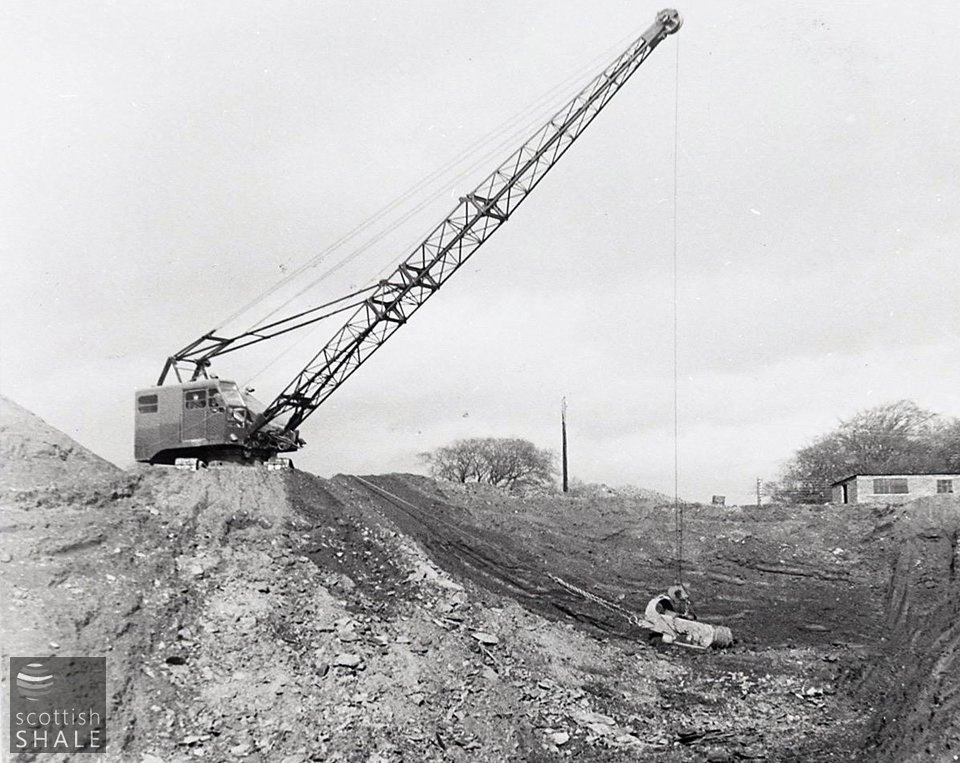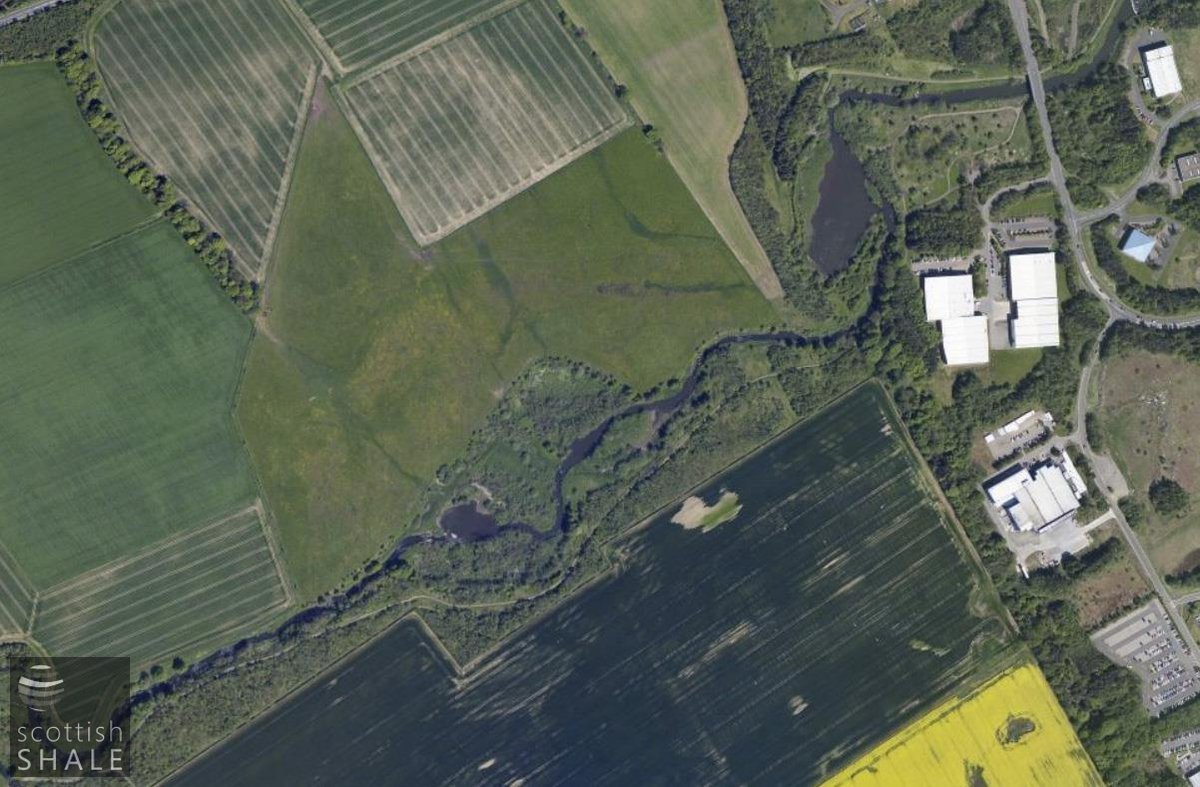Digging the Dunnet
Opencast shale working by the River Almond
F18022, first published 12th May 2018
Towards the end of world war two there was a desperate shortage of oil to fuel the war effort, but no spare labour available to increase production from West Lothian’s oil shale mines. Attention turned to a number of locations where seams of shale lay close to the surface and could be worked in opencast quarries. One of the largest of these sites lay beside the river Almond between Westwood and Livingston where seams of Under Dunnet and Main Dunnet shale lay just a few metres beneath the fields of Livingston Mill and Charlesfield estates
Quarrying operations began in April 1946. Whatlings Ltd., the contractors for the work, used two draglines, a face shovel and two bulldozers to strip mine the shale, which was then transported by a fleet of six tipper lorries to Westwood oil works, a little over two miles away. A staff of 26 men produced about 2,000 tons of shale each week.
During quarrying operations, the course of River Almond was diverted in two places to allow access to the shale, returning to something like its original route once the shale was worked out. In the central part of the quarry site, a thick bed of boulder clay was found in place of the shale seam, presumably marking where an earlier, ice-age, route of the River Almond had eroded the shale away. The main quarry, working the Middle Dunnet seam, operated until 1950, while a second phase of opencast working, exploiting the Under Dunnet seam on a site north of the river, continued until 1957.
The ground surface was reinstated over some parts of the quarry, but the main workings were left as a series of pools linked to the river Almond. During the 1990’s Livingston Development Corporation undertook further land renewal work; planting trees, building paths, and creating the peaceful haven for wildlife that exists today.
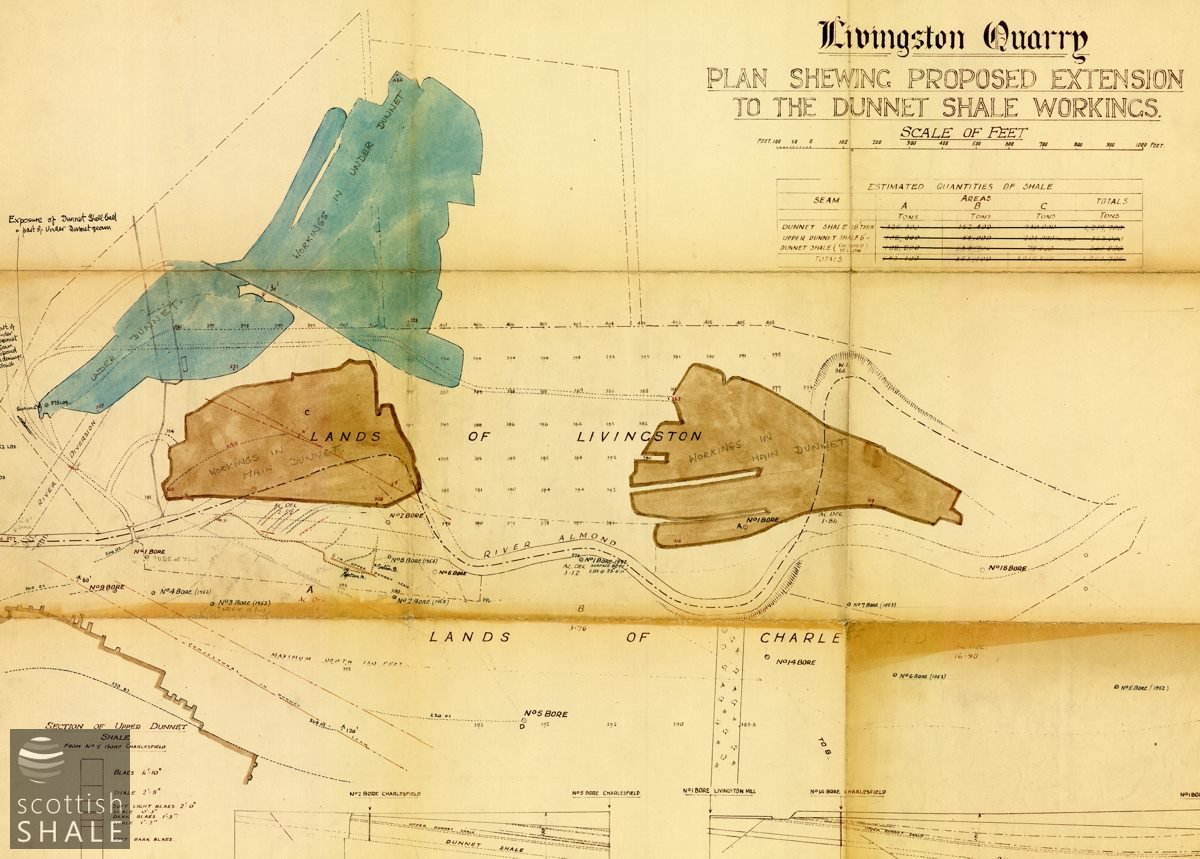
Plan courtesy of British Geological Survey.
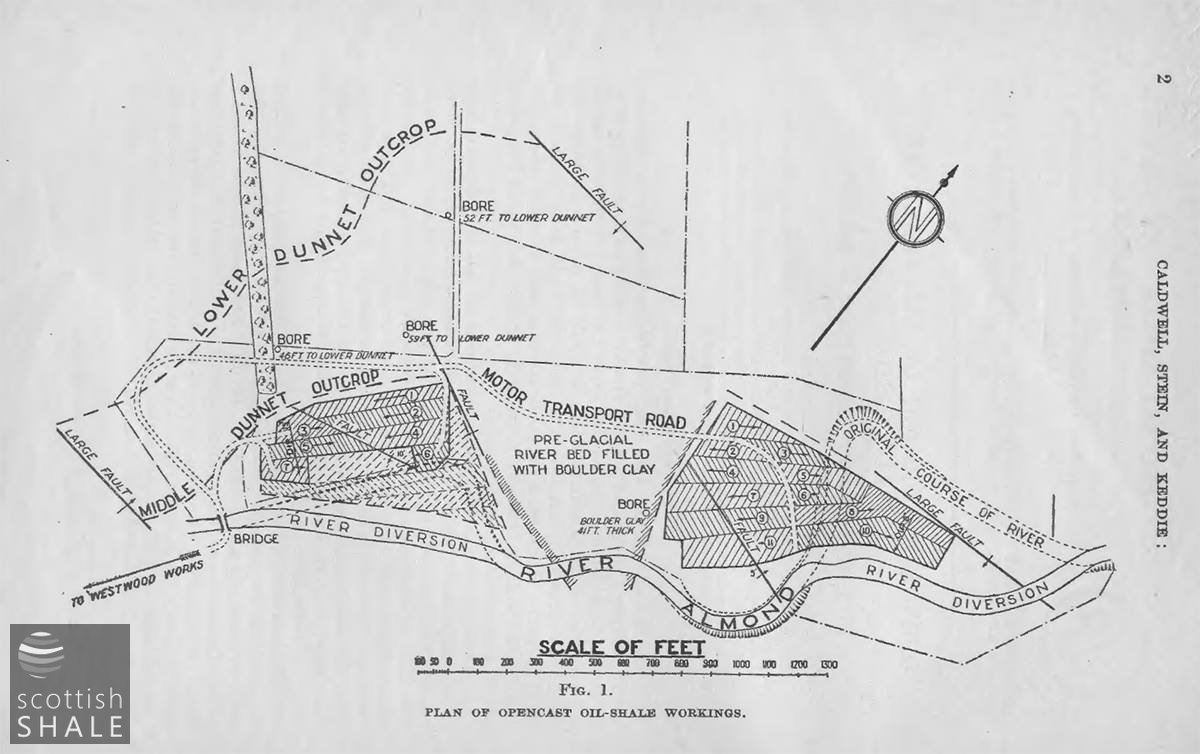
From "opencast working of oil shale at Livingston" by J.M. Caldwell, J. Stein, and R. Keddie, presented at the Second Oil Shale and Cannel Coal Conference organised by the Institute of Petroleum, Glasgow 1950.
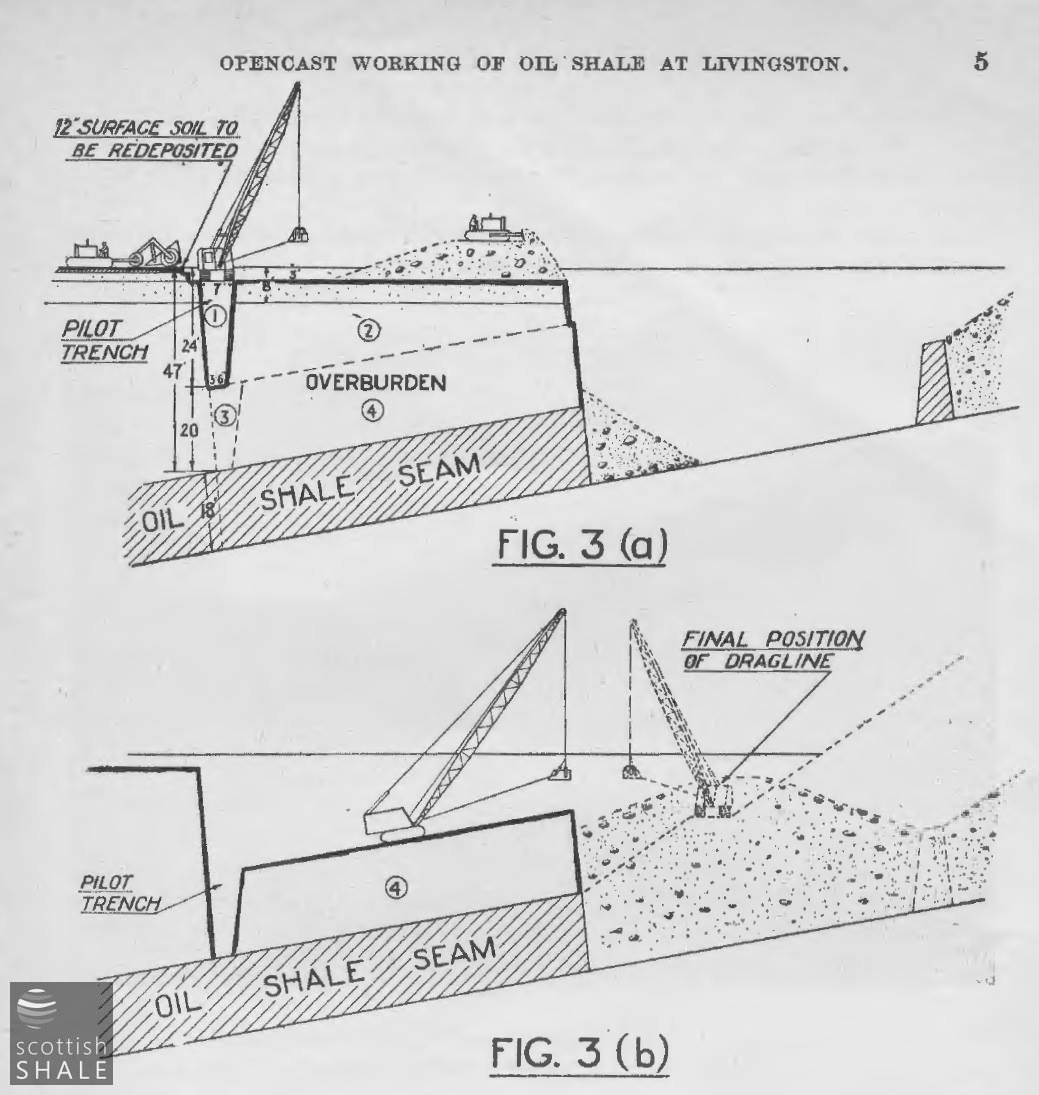
From "opencast working of oil shale at Livingston" by J.M. Caldwell, J. Stein, and R. Keddie, presented at the Second Oil Shale and Cannel Coal Conference organised by the Institute of Petroleum, Glasgow 1950.

